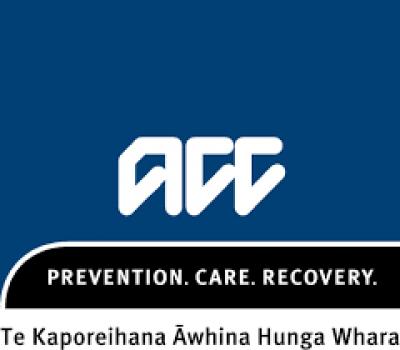ACC and WorkSafe New Zealand today launched the inaugural ‘Reducing Harm in New Zealand Workplaces Action Plan’. The Plan supports their collaborative efforts to meet the government’s target of reducing serious injuries and fatalities in the workplace by at least 25 percent by 2020.
“Our agencies are committed to working in partnership with industry to meet the government’s target and achieve positive health and safety outcomes for all New Zealanders” said ACC’s Chief Customer Officer, Sid Miller. “Partnering with industry gives us a more in-depth understanding of what causes harm and severe injury across all New Zealand workplaces, rather than just single problems in single sectors.”
WorkSafe’s CEO, Gordon MacDonald, said input from both agencies would ensure better outcomes. “What businesses want to see from WorkSafe and ACC is clear advice and a consistent, practical approach. That’s what the Plan will help us deliver – smart, targeted injury and harm prevention programmes based on the best available evidence.”
However government agencies cannot do it alone. Everyone has a role to play in keeping themselves, their co-workers and their working environment safe. “Good health and safety is about making sure we all take the right steps to keep ourselves and our workmates safe and healthy at work” said Mr MacDonald.
The ‘Reducing Harm in New Zealand Workplaces Action Plan’ is taking a new look at how, together, we can better support the agriculture, construction, forestry, manufacturing and health sectors to make significant improvements to keep their workers safe. The Plan also focuses on the most common causes of injury across all sectors – slips, trips and falls; working in and around vehicles; body stressing, and respiratory health risks. Underlying this is a new focus on fundamental changes that support health and safety culture, such as worker engagement and participation.
There are a number of programmes in the Plan already underway, including Safetree, Safer Farms and the Canterbury rebuild programme. Other programmes are in the development stage, which means we are engaging with stakeholders and gathering evidence and data to support interventions.
“Industry and business can have confidence that we’ve taken an evidence-based approach to severe injury and harm prevention; that what we are delivering for and with industry are agreed, targeted and smart approaches to tackling the causes of severe injury and harm” said Mr Miller.
“Businesses, workers and the public rightly expect government agencies to work together and the three-year Plan is a major step towards a smarter, more co-ordinated approach to keeping New Zealanders safe and healthy,” said Mr MacDonald.ACC and WorksafeBackground
- The government’s ‘Working Safer’ blueprint in 2013 recognised that ACC and WorkSafe New Zealand need to work together.
- Every three years, the Boards of ACC and WorkSafe will develop a workplace injury prevention plan consistent with ACC injury prevention priorities and the Workplace Health and Safety Strategy.
- The resulting ‘Reducing Harm in NZ Workplaces Action Plan’ will be launched in July 2016.
- It is an overarching framework for the development and delivery of severe injury and harm prevention programmes. The Plan is evidence-based, and uses the unique skills, influence, incentives and tools of each organisation and combines them with the knowledge held by industry.
- This partnership approach will achieve positive health and safety outcomes for New Zealanders.
Working together
By working together we will:
- achieve greater reach and efficiency
- establish a clear and consistent approach to workplace severe injury and harm prevention
- provide clarity for businesses around what we are doing and how we will work with them
- avoid duplication (both in activities/focus and ensuring efficient use of employer levies)
- align our data sets to better understand the causes of severe injuries, which in turn will enable evidence-based programmes which target the right risks.
- develop a range of targeted, meaningful incentives for businesses.
Funding
- Programmes included in the Plan will be funded primarily from the ACC Work Account. WorkSafe will also have some funding available from the HSE levy. This funding model ensures businesses are only levied once for injury prevention and supports the effective and efficient use of employer levies for workplace injury prevention initiatives.
Definitions
- Serious injuries are those that result in hospitalisation and have a high chance of death
- Severe injuries are those injuries that result in more than a week off work.
- A press release from ACC and Worksafe New Zealand

